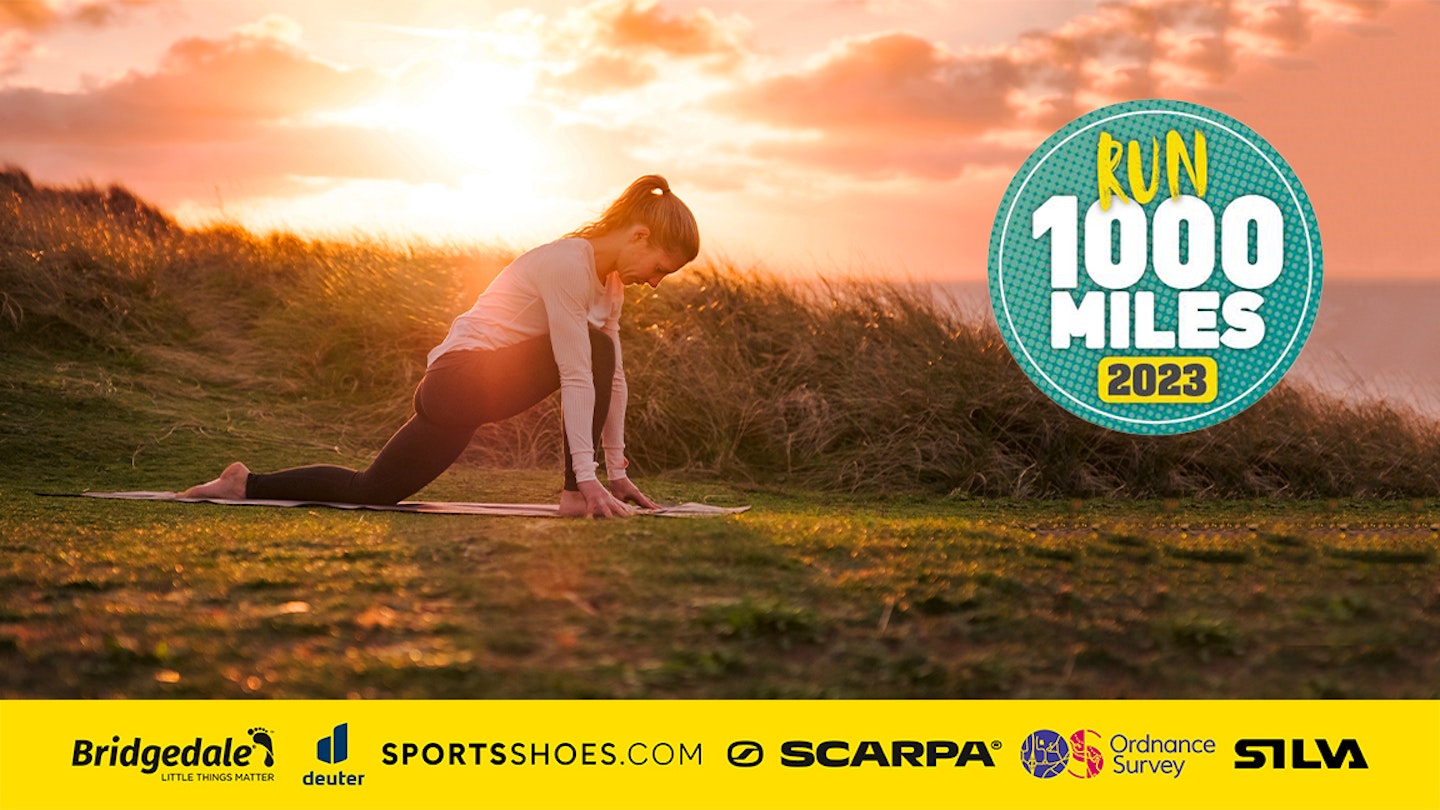Yoga for runners looking to improve their flexibility and strength can be hugely valuable to overall running fitness and ability. As part of the Run 1000 Miles Challenge, we share advice from yoga and running coach Helen Clare on the best yoga poses and exercises for runners.
Yoga can be hugely beneficial to runners, in so many ways. When practised with the correct technique, you can achieve all your strength training, including core work, improve your mobility, flexibility and recovery time, reduce/heal common running injuries, and discover a new-found focus and ability.
Essentially, you’ll get everything you need for physical and mental fitness on the trails with a well-rounded yoga practice. Here are just six of my favourite pre- and post-run yoga poses and conditioning exercises.
Best yoga poses for running
Toe-Taps: Strengthen the core
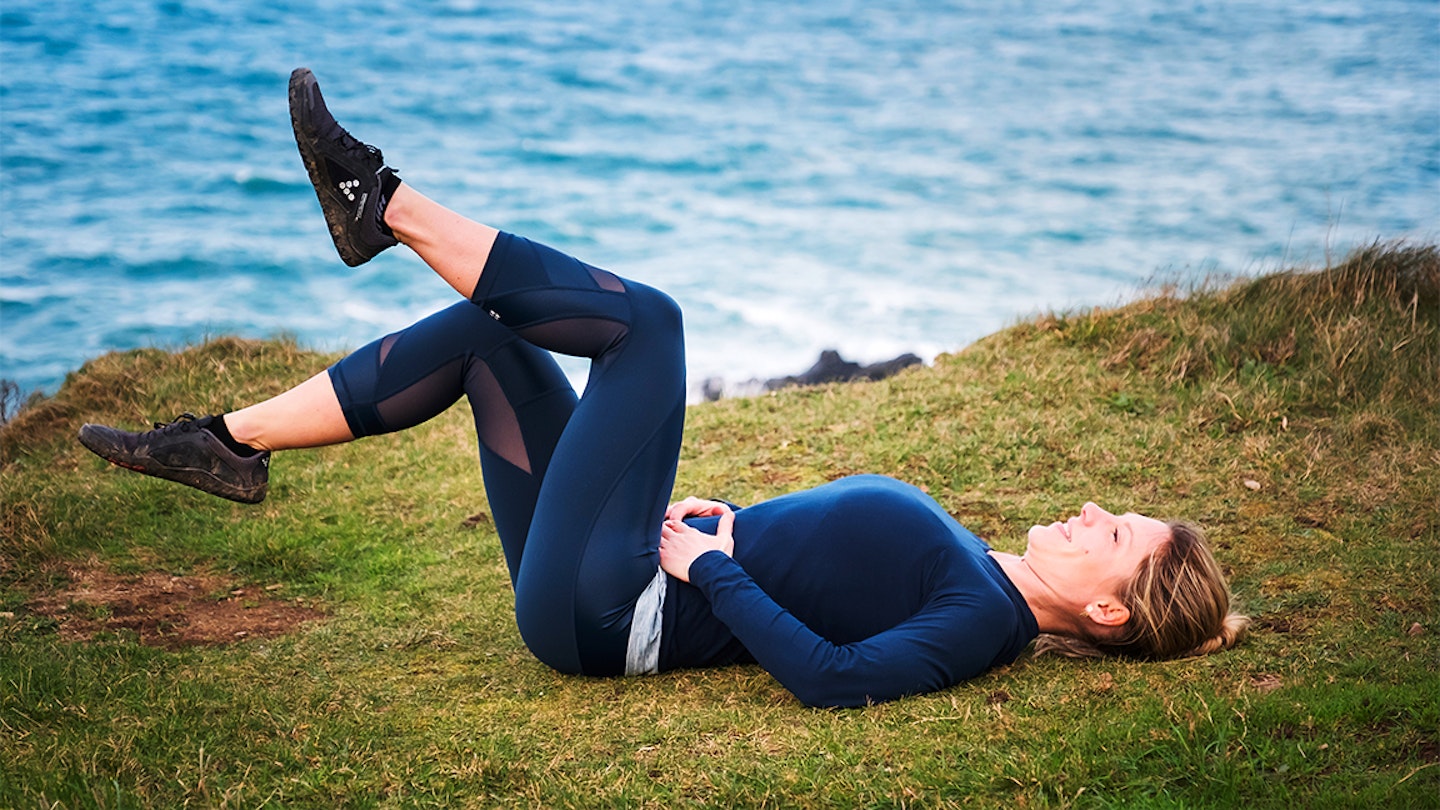
Why? These toe-taps are a favourite dynamic core-strengthening exercise of mine, as we get to really work on stabilising the lower back and the pelvis, using and building the strength of the deeper abdominals, in combination with the hips. Every runner should be doing specific core-strengthening as part of their routine.
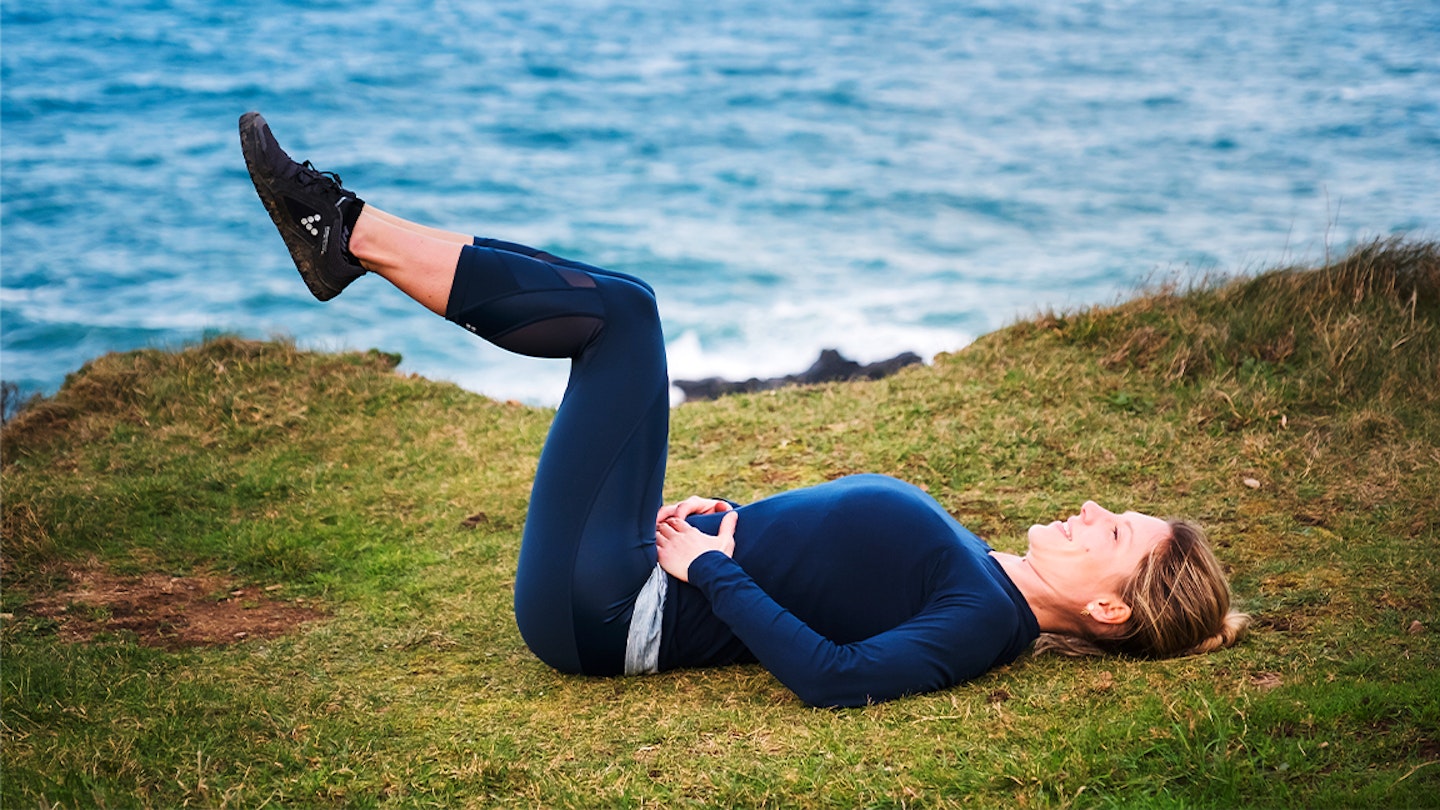
How? On your back, lift your knees over the hips. Lengthen your tail bone, so you feel the lower back close to the ground. Maintain this. Slowly, lower the toes of one foot towards the ground, while keeping the pelvis and lower back steady. Alternate sides for 10-30 reps. If you feel lower back strain, make the movement smaller, stopping if it continues.
Bridge-Lifts: Strengthen the glutes and mobilise the hip flexors
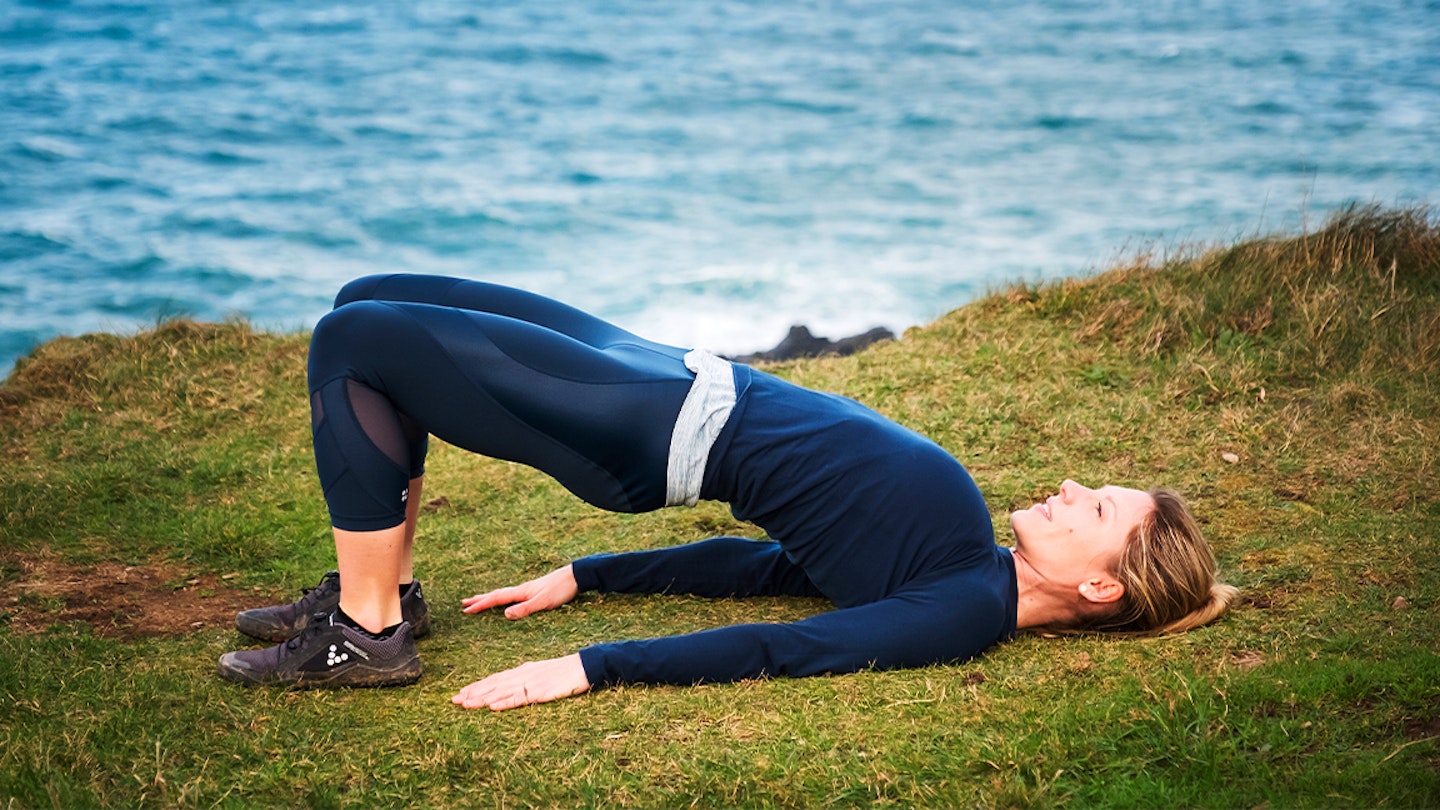
Why? Bridge-lifts are like moving in and out of the traditional Bridge pose, but our focus is on a smooth transition. It’s a great way to dynamically warm the hip flexors, for greater range of movement, and subtly strengthen the lower gluteus maximus, which is often underused.

How? Lying on your back, place both feet down, ankles under knees. Lift the hips up slowly and as smoothly as you can, then lower in the same smooth way, maintaining an even level of the pelvis. Keep a subtle engagement of the inner thighs, try to relax your upper glutes, whilst having a sense of ‘hugging’ the sitting bones with the lower glutes. Try 5-10 reps.
Knee-Taps: Strengthen gluteus medius and mobilise the Achilles
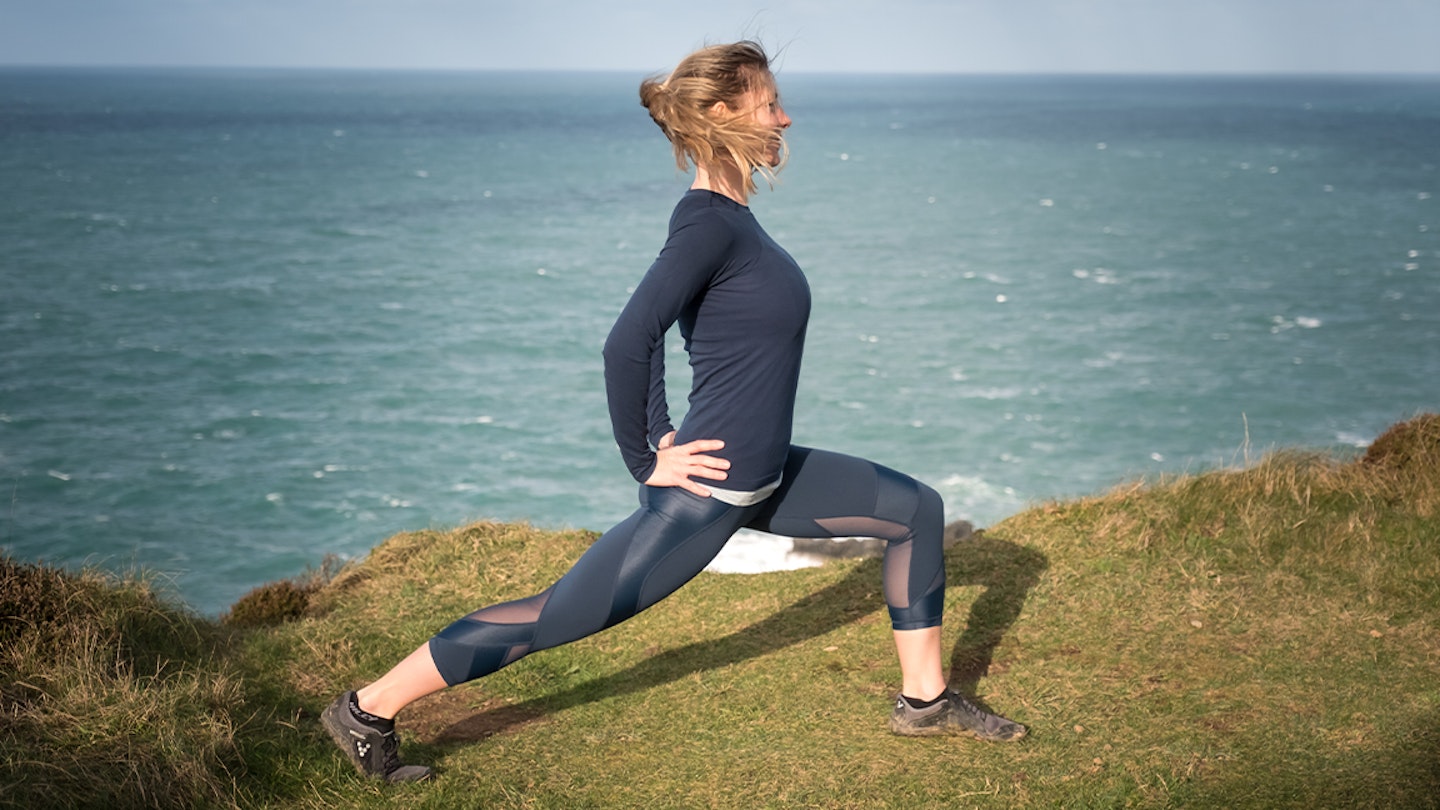
Why? Good strength in the gluteus medius is essential to stabilise the pelvis – vital for safe and efficient running, as we transfer weight from one foot to the other. Conditioning the Achilles tendon can help prevent Achilles tendinitis.
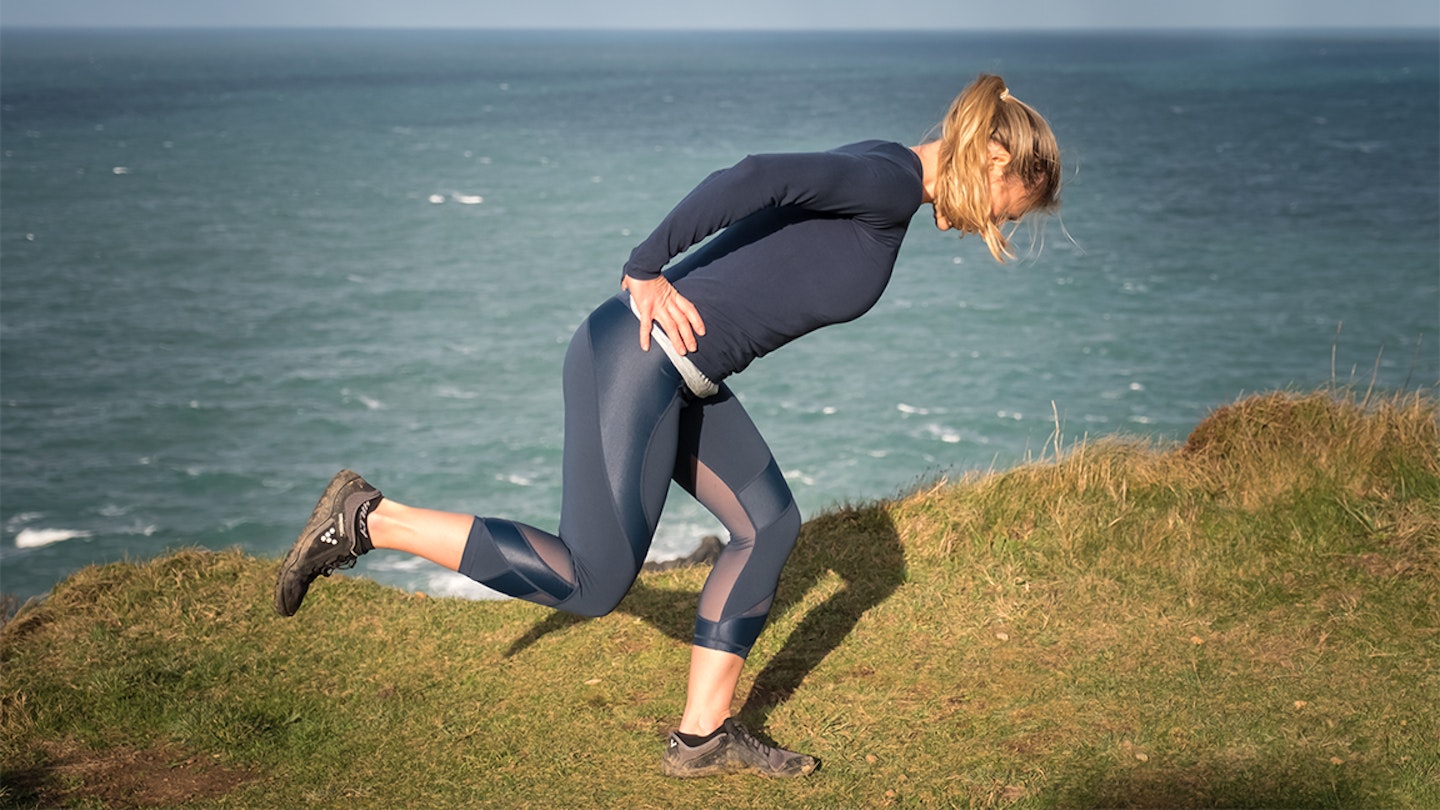
How? Starting in a comfortable high lunge position with hands on hips, draw the lower belly gently in, keep the hips level and lean the torso forward. Take weight further on to the front foot, then tap the back knee to the inside of the front knee. Return to the lunge, repeat up to five times. Keep the hips as level as you can. This builds strength, balance and coordination and may need to be worked up to by only holding the high lunge initially. Any pain or discomfort, stop.
Supine Figure: Mobilise your hips (piriformis)
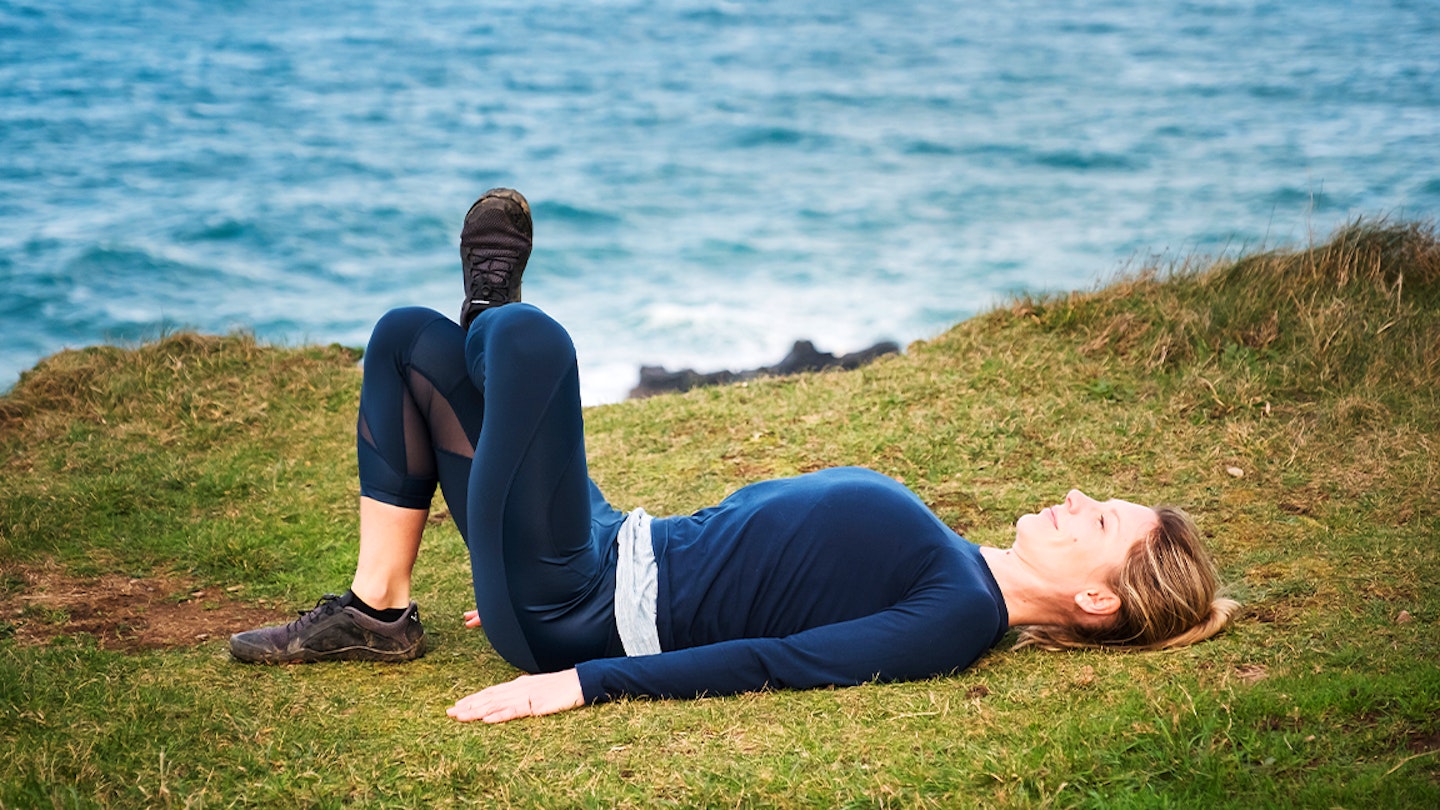
Why? The piriformis is a small, deep external hip rotating muscle that can also frequently get super-tight. There are a few variations of this pose which allow us to stretch to our own degree.
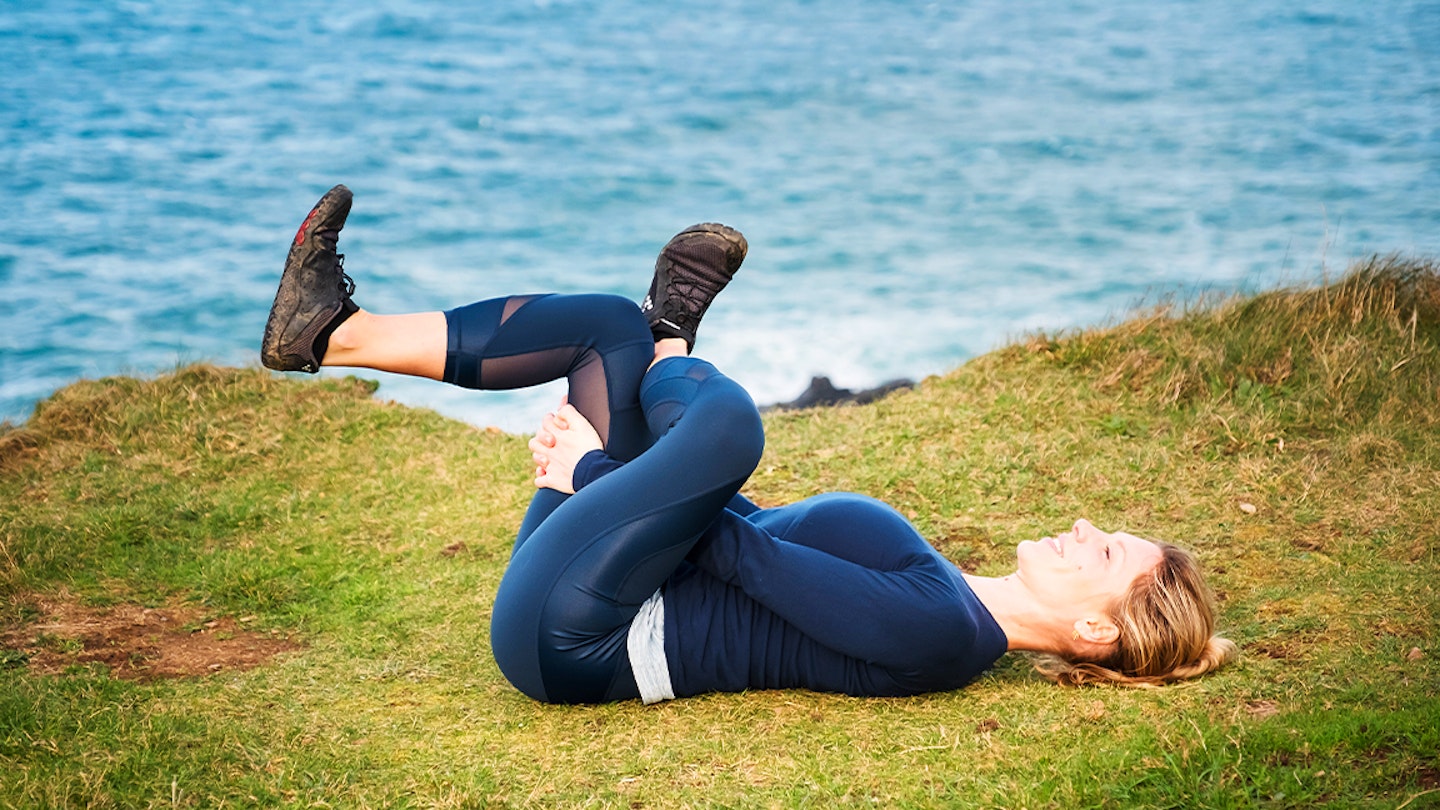
How? Lie on your back, with both feet on the floor. Cross one ankle over the opposite thigh and flex the toes. Rock gently from side to side. This may be enough. If you can comfortably go further, lift the legs and interlace hands around the back of the uncrossed thigh. Optionally, lift the head toward the thigh for a few breaths.
Down Dog: Re-lengthen the spine and hamstrings
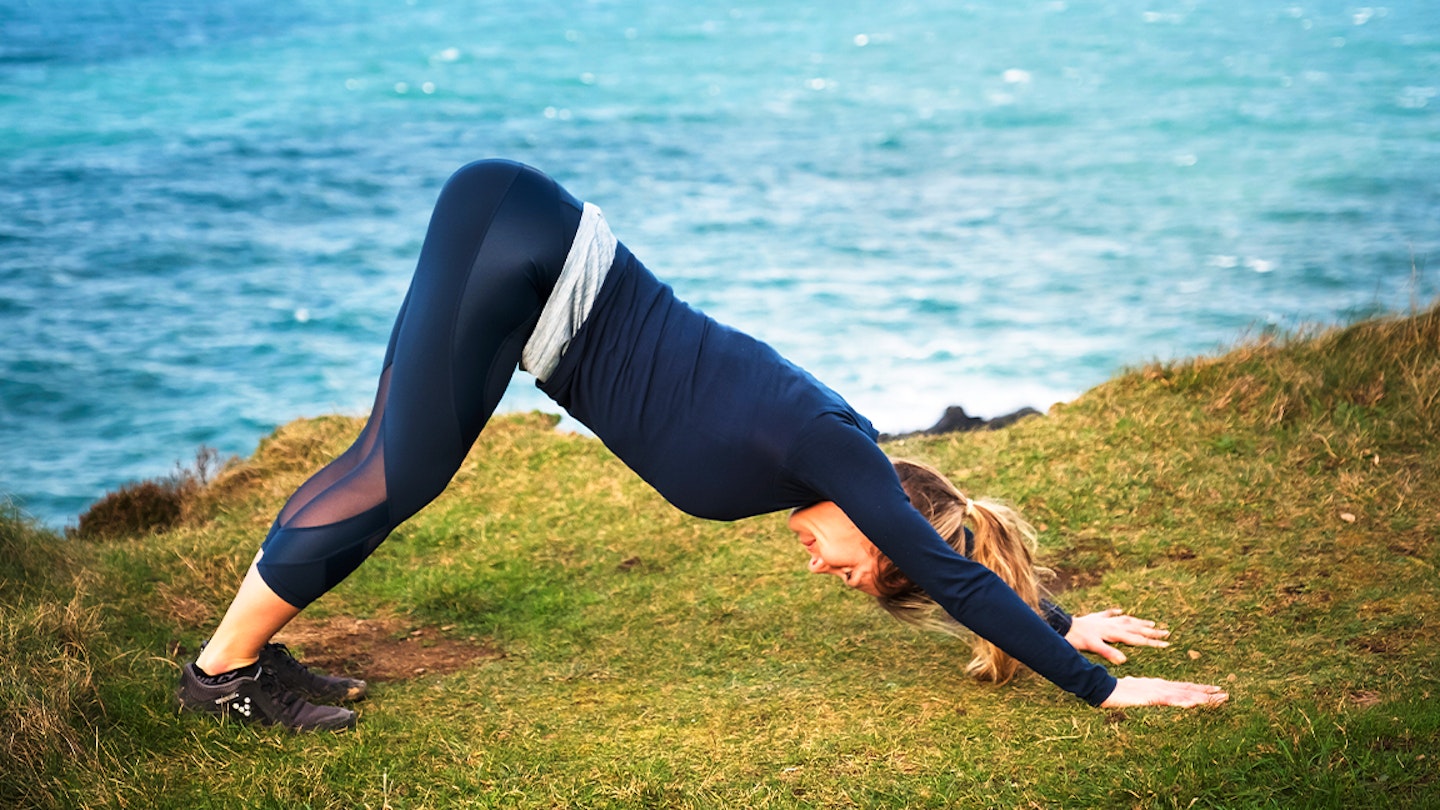
Why? If there was only one pose I could recommend for after a run, it’s this. Downward Facing Dog is a classic yoga pose that offers many benefits to a runner. It’s a great way to re-lengthen the spine, opens the shoulders and allows you to safely and gradually stretch out the backs of the legs.
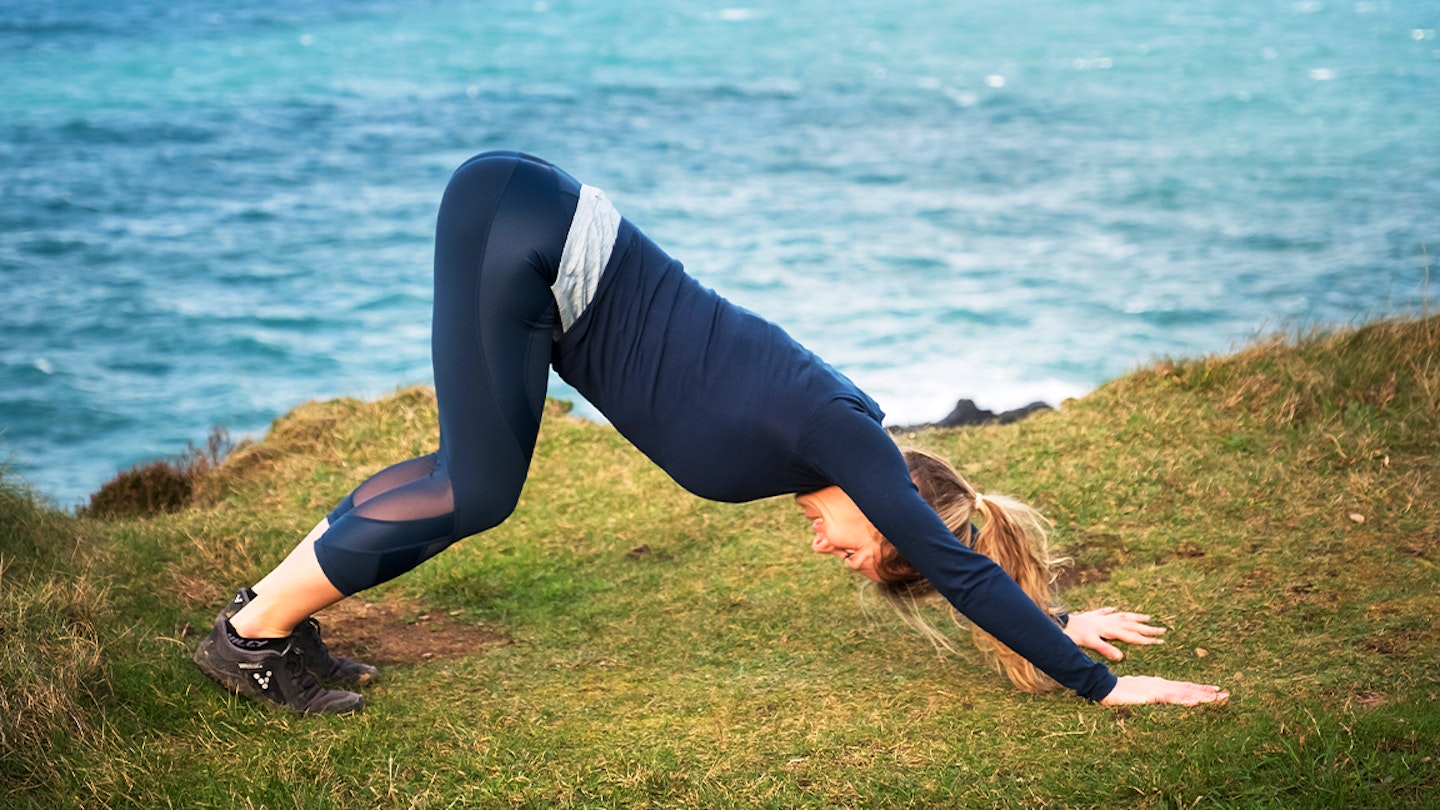
How? Starting on hands and knees, wrists under shoulders, spread your fingers wide. Tuck the toes and slide your hips back to get long in the spine. Push into the hands and use your core to lift the knees, followed by the hips. Step the feet back a little, keeping them hip width. Send the hips up and back, so shoulders move away from the wrists. Ease into the hamstrings and calves by alternately dropping each heel towards the ground. Allow both heels to drop towards the floor, while keeping the back of the knees bent a little, or a lot depending on flexibility.
Low Lunge and side stretch: Release TFL, hip flexors, quads
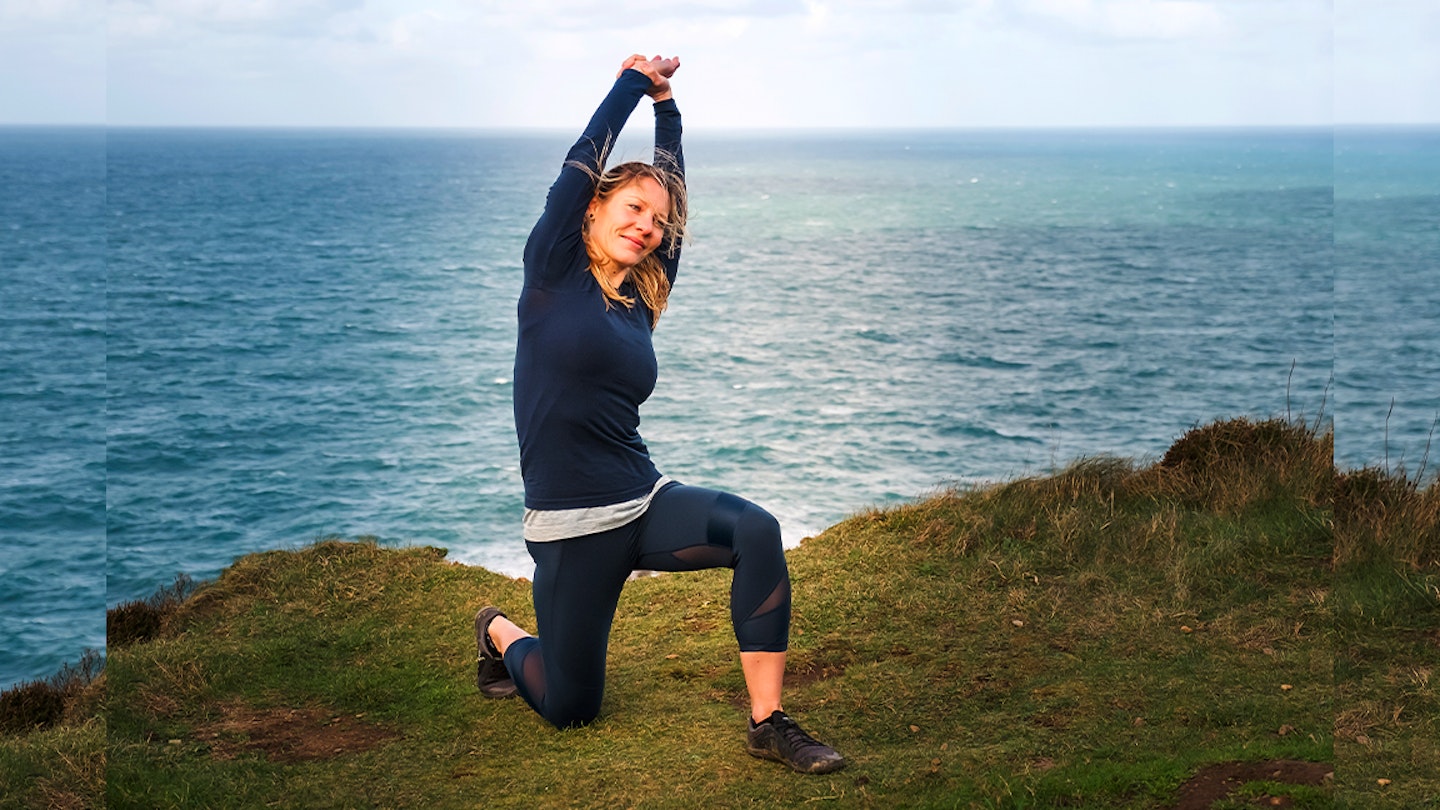
Why? Hip flexors are one of the most commonly tight areas for any runner, so take the time to release some tension here after each run. The tensor fascia lata (TFL) muscle, in the front pocket area of the hip, also accumulates a lot of tension, which can pull excessively on the iliotibial (IT) band and knee.
How? With the front foot and back knee down in a low lunge position, bring your hands to the hips. Lengthen the tail bone for a likely stretch across the front of the hip. With the back knee roughly under the hip, reach both arms up and over the to side, away from the back knee.
Meet the expert
Helen Clare is a senior yoga teacher, Yoga for Athletes coach and running coach, based in Cornwall, where she leads unique yoga and running weekend retreats. Go to runbetterwithyoga.com for retreat info, and your free guide to the four essential poses every runner needs.
Top image credit: Dougie Reid
If you are suffering with an injury, some of these poses might not be suitable for you. Whatever your health, always start slowly and progress gradually.
For all the latest news, tips and gear reviews, sign up to the Trail Running Newsletter.
This article is brought to you by the official Trail Running Run 1000 Miles Challenge.

